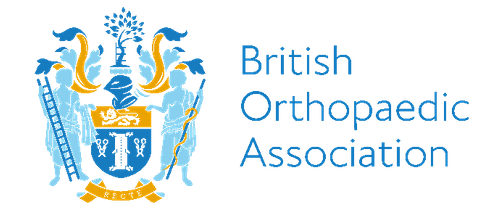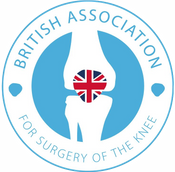How to tackle the increased rate of ACL injuries in women’s football


Authors:
Morgan Bailey
Consultant Trauma & Orthopaedic Surgeon
University Hospital Southampton and Portsmouth University Hospital
Nathaneal Ahearn
Consultant Trauma & Orthopaedic Surgeon
Torbay & South Devon Hospitals
One Anterior Cruciate Ligament (ACL) injury in your squad is unfortunate. A second is really bad luck. By the time you’re at your fourth, including both the current Lioness captain and the reigning BBC Sports Personality of the Year, there’s clearly an intrinsic problem that needs to be addressed. The high incidence of ACL injuries in the Arsenal women’s football squad highlights the risks of serious knee injuries playing cutting sports such as football. What is happening this season at the elite level is just the tip of the iceberg. The British Orthopaedic Association and the British Association for Surgery of the Knee are acutely aware of the rapid increase in the number of young athletes sustaining this injury with the biggest rise seen in teenage girls. They are keen to develop and disseminate a greater understanding of the problem and the highlight the value of injury prevention programs in significantly reducing the risk of serious knee injuries in young athletes.
There has been a surge in the airtime given to women’s football in the UK, with the growing success of our national team. What has followed has been a long overdue increased uptake in the sport by girls at grassroots level with a 15% increase in female youth teams registered with the FA since the UEFA Women’s Euro success in 20221. Unfortunately, it has come hand in hand with a rise in significant knee injuries in girls and young women, at a rate that outstrips their male counterparts. It is not just footballers who are experiencing this phenomenon, as anyone who engages in a pivoting sport such as netball is at risk, however football injuries account for nearly half of all ACL reconstructions performed in the UK10. Biologically female athletes have 3-6 times higher risk of ACL injury than males2,3. Combine this with the rise of young girls and women engaging with sport and we can see why this problem is just starting to come to light. Engaging adolescent girls in sport has been identified as a significant challenge4. This is a group that does not need any more roadblocks thrown at it, so tackling injury prevention is a high priority.
It is often easy to write off the discrepancy as a result of natural sex differences in physiology and anatomy, but girls and women are at higher risk for a multitude of reasons. There is no doubt that hormonal influences on ligament laxity and a higher preponderance for valgus (knock knee) lower limb alignment puts the average biologically female player on the back foot. In women’s football the majority (88%) of injuries are non-contact, and are associated in two-thirds of cases with defensive pressing7. It is a horizontal movement (rapid deceleration), not a vertical movement (landing), combined with single leg loading and a change of direction, that is the mechanism of ACL injury. Fatigue is not a factor, with most injuries occurring in the first half of matches, and more injuries occur in competitive matches than training. Whilst ACL injuries are not the most common injury in women’s football, they have the highest injury burden accounting for nearly one-third of all playing time lost due to injury9.
There is increasing concern that the gendered environment has a greater part to play than originally thought5. This refers to the fact that within societal norms, there are factors that contribute to their higher risk. These include environmental elements such as the fact that women’s football boots are smaller versions of those designed for men, rather than women’s specific. Female athletes are more likely to play on poorer quality pitches, with less qualified coaches. In elite youth football development boys are signed to Professional Academies from under 9 and enter the Premier League’s Elite Player Performance Plan (EPPP). The EPPP provides access to strength and conditioning coaches and injury surveillance and management, together with a recognised games and education programme designed to create the next generation of home grown male footballers. There is no such system for girls until over the age of 12 and even then it is underfunded and impoverished compared with the boys programme. A recent study of injuries in women’s football suggests that increased match load on players, a significant problem in the elite game, and lack of regular exposure to high-speed football actions during training lead to a higher rate of injuries8.
As more women and young girls take up football, the seemingly most straightforward method for development is to mirror that of the boys and men before them, but it is equity, rather than equivalence that we should be striving for. This means rather than simply encouraging more women to take up these sports in line with men, we should be creating the appropriate environment to do so, that accounts for both sex and gender based differences. A prime example of a gender based difference is the cultural approach to resistance training in women. There are increasing numbers of women undertaking strength and conditioning training and this is reflected in social media, but there is still a negative association with appearing physically strong and muscular among many women and young girls. Poor neuromuscular control is a significant, but modifiable, risk factor for ACL injuries.
The evidence is overwhelming and comprehensive that injury prevention programmes are the answer to the exponential rise in ACL injuries. In a meta-analysis of meta-analyses, ACL injury prevention programmes reduce the risk of all ACL injuries by half in all athletes, and by two-thirds in female athletes sustaining non-contact ACL injuries6. Across multiple different sports, integrated neuromuscular training programs (biomechanical, neuromuscular control, and strength training techniques) have effectively improved performance and decreased the risk of ACL injury. The perception is that ACL injury prevention programmes require extensive commitments in time and involvement for players and coaches, which has impeded widespread acceptance and utilisation by athletes and teams to implement the training necessary to reduce ACL injury risk. The charity Power Up To Play is the first of its kind in the UK, with the primary purpose of reducing knee injuries in children playing sports using a standardised evidence based warm up. It aims to reduce the barriers to implementation of injury prevention programmes, by providing an accessible framework for players and coaches to follow. Simply put, the more clubs engage with the program, the fewer injuries we will see.
The FA Wildcat programme has helped increase the numbers of girls who are playing football from an increasingly young age, but there is no similar scheme to increase female coaching involvement. Promoting positive female role models and female coaches within the sport would have a beneficial effect. The Tackling Teenage Disengagement Report, however, highlights that the person with the greatest influence on the sporting decisions made by a teenage girl is her mother4. Perhaps it is not just the coaches we should be engaging with when it comes to injury prevention, but also the parents, and specifically the mothers. Along the same line, targeting women’s recreational teams, be they netball, football, or hockey, would serve not only to reduce the injuries within these groups, but also those of their children. By all means, men’s recreational teams should be approached also, but if we are to tackle this injury discrepancy, we need to focus our initial efforts accordingly.
With the FIFA Women's World Cup taking place this summer, it is likely that we have yet to see the peak of both interest in women’s football and ACL injuries amongst female footballers within the UK. It is imperative that we take every opportunity to reduce the burden of this life changing injury. The British Orthopaedic Association and the British Association for Surgery of the Knee are committed to promoting injury prevention and further research into the specific treatment of the young and the female ACL injury. We need to maximise funding opportunities and engagement with injury prevention programmes such as the Power Up To Play initiative, as within the grassroots game of today are the Lionesses of the future.
References
- https://www.thefa.com/news/2022/nov/08/inspiring-positive-change-women-girls-football-strategy-update-20220811
- Lindenfeld TN, Schmitt DJ, Hendy MP, et al. Incidence of injury in indoor soccer. Am J Sports Med 1994;22:364–71.
- Arendt EA, Agel J, Dick R. Anterior cruciate ligament injury patterns among collegiate men and women. J Athl Train 1999;34:86–92. 3 Shultz SJ, Schmitz RJ, Cameron KL, et al. Anterior
- https://www.womeninsport.org/wp-content/uploads/2022/03/Tackling-Teenage-Disengagement-March-2022.pdf
- Parsons JL, Coen SE, Bekker S. Br J Sports Med 2021;55:984–990.
- Webster KE, Hewett TE. Meta-analysis of meta-analyses of anterior cruciate ligament injury reduction training programs. J Orthop Res. 2018 Oct;36(10):2696-2708. doi: 10.1002/jor.24043. Epub 2018 Jun 13. PMID: 29737024.
- Lucarno S, Zago M, Buckthorpe M, Grassi A, Tosarelli F, Smith R, Della Villa F. Systematic Video Analysis of Anterior Cruciate Ligament Injuries in Professional Female Soccer Players. Am J Sports Med. 2021 Jun;49(7):1794-1802. doi: 10.1177/03635465211008169. Epub 2021 May 14. PMID: 33989090.
- Ekstrand, J., Hallén, A., Marin, V. et al. Most modifiable risk factors for hamstring muscle injury in women’s elite football are extrinsic and associated with the club, the team, and the coaching staff and not the players themselves: the UEFA Women’s Elite Club Injury Study. Knee Surg Sports Traumatol Arthrosc (2023). https://doi.org/10.1007/s00167-023-07429-5
- Horan, D, Blake, C, Hägglund, M, Kelly, S, Roe, M, Delahunt, E. Injuries in elite-level women’s football—a two-year prospective study in the Irish Women’s National League. Scand J Med Sci Sports. 2022; 32: 177– 190.
- Gabr A, Haddad F. The National Ligament Registry 2022 Annual Report. https://www.uknlr.co.uk/pdf/annual-report-2022.pdf
